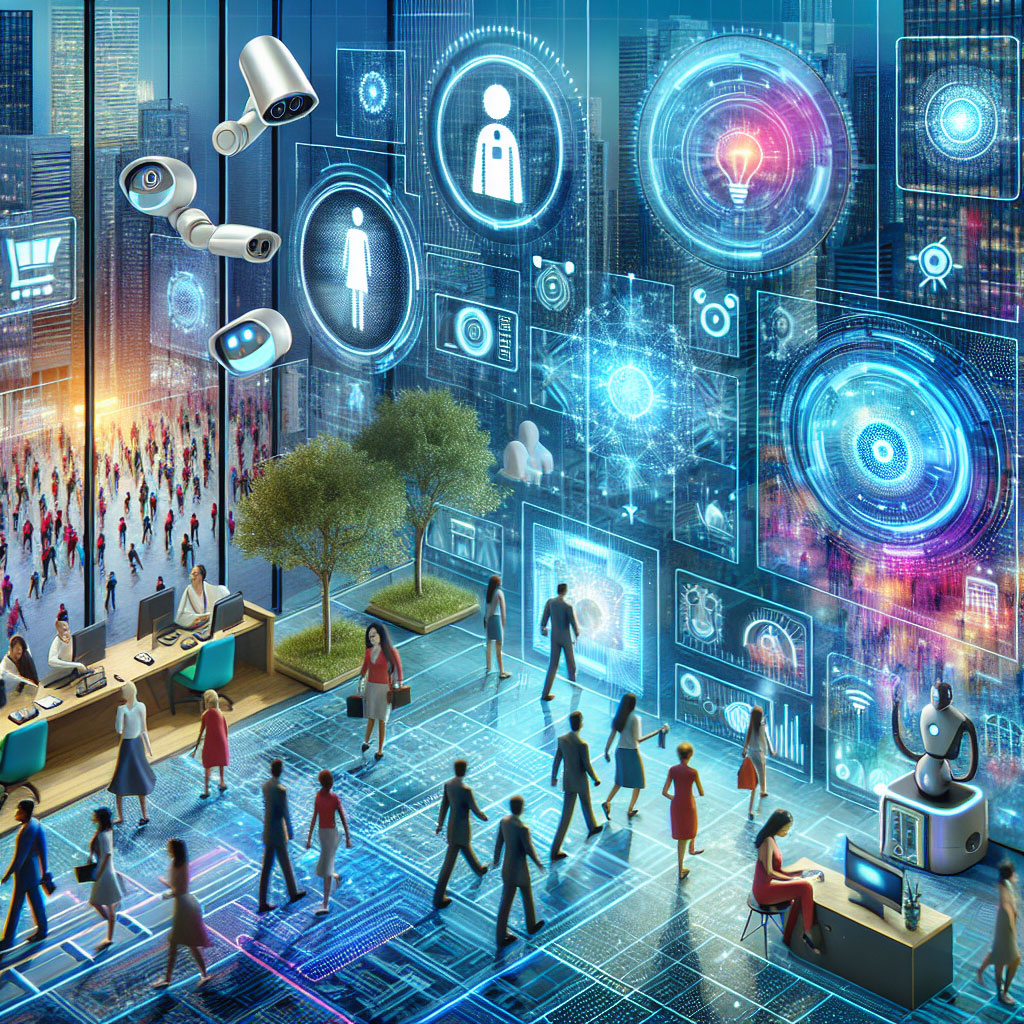
4 Ways That AI Is Improving the Customer Experience

Climbing up the hype chart of technology application across domains, Artificial Intelligence (AI) has established itself as an ideal route to innovating digital experiences and transforming business as usual. Case in point: nearly a quarter of businesses have increased their spending on artificial intelligence in the aftermath of the global pandemic while 75% plan to launch new initiatives in the new normal. Global spending on AI is expected to double by 2024!
While everything from marketing to employee on-boarding to robotics automation and advanced analytics falls under its vast gamut, AI is at its best when using small meaningful steps to make people’s lives better, i.e., customer experience. Brands and customers worldwide are embracing AI-powered solutions for unprecedented use cases. Here’s how Artificial Intelligence is carving a niche customer experience.
1. Better understanding the customer
eCommerce players were the first to observe the potential of AI in understanding customers. With revolutionary ‘customers also bought’ and ‘you may also like’ sections, brands were able to establish a meaningful connection with end customers. AI continues to accelerate this understanding between the two parties for a hyper-personalized, exceptional customer experience across industries.
Also read: The Value of Conducting a Customer Experience Audit
“Machine learning, natural language understanding, and natural language processing can help analyze customer sentiment and customer feedback at scale.”
– Gartner, 2019
AI-enhanced customer relationship management (CRM) like C2CRM, Salesforce Einstein, and Zoho and customer data platforms (CDPs) like Amperity, BlueConic, and ActionIQ are enabling enterprises to gather and analyze social, historical, and behavioral statistics for the best vantage of customer needs and desires. Unlike traditional data analytics software, AI responds in real-time and continuously learns and improves from a huge amount of data to anticipate customer behavior. This allows brands to gain a deeper understanding of what their customers want, how they feel, and what they are likely to do. They can find patterns and improve the customer journey with relevant content and recommendations.
2. Automating responsiveness and security with the right prediction
Ethical AI and predictive analytics form one of the most complimentary combinations. It enables enterprises to not only get deep insights into what happened and why it happened but also forecast quantitatively about what can happen now. This goes a long way in providing a holistic experience wherein the customer feels safe, understood, and cared for. There is a greater sense of emotional connection with the brand. There is no “response pipeline or call on waiting”, there is no “fear of leaking too much information”, and there is no “annoyance of answering repetitive questions or skipping unnecessary ads”. AI, with predictive analytics, can analyze large amounts of data with zero latency and produce real-time, actionable insights that guide the customer interactions with minimal cyberthreat. For instance, Precognitive’s Decision-AI has a sub-200 millisecond response time to assess any event and prevent fraud in real-time. Volvo has also utilized AI to create an Early Warning System that analyses 1 M events every week and scores the future health of different parts. It has also helped Volvo test cars with sensors and deliver the safest customer experiences.
Also read: Reimagining HR with Chatbots and Analytics
3. Elevating the merger of online and offline worlds
Cognitive AI solutions enable organizations to create highly personalized experiences at a scale not achievable by humans alone. At the intersection of the physical and digital – the ‘phygital’ interactions of brands and customers can be sufficiently elevated with AI applications. It can offer speed, efficiency, and personalization like never before. For instance, emotion AI solutions that estimate customer emotions by analyzing visual, textual, and auditory customer signals can allow frontline representatives to be more conscious of customer emotions and pay special attention wherever needed. Another interesting application is ‘social listening’ that combines Natural Language Processing and machine vision to identify customers to contact and respond to them automatically for better customer satisfaction. KFC has already collaborated with Baidu – a Chinese search engine to use facial recognition and predict orders on the basis of verifiable metrics of time of day, estimated age, gender, and even their mood! Other examples include Macy’s smartphone-based assistant that helps customers navigate stores while social distancing and a celebrity-wardrobe thrifting app by UK-based clothing retailer ASOS. A simple solution like that to recurrent problems can free up human assistants to focus on more complex scenarios.
Also read: 5 Predictions for AI in the Manufacturing Industry
4. Redefining customer service
Conversational AI is the undoubted champion of personalized, quick, and convenient experiences. While more than half of the users find the most frustrating aspect of customer service as the slow response time, intelligent AI concierges can instantly greet them, answer questions 24X7, carry out transactions, and even connect them to agents with ample contextual data. Backed with NLP and ML, they can also create a proactive personalized offer, send reminders, filter out necessary content, and share rich imagery and product photos depending on the channel of interaction. With such promising results and demonstrated worthiness, customer service has been declared the leading application of AI as of 2020 by an MIT Technology Review survey. Today, 46% of customers find AI interactions to be trustworthy. AI-powered bots are resolving a wide range of customer experience pain points that were previously unavoidable. State Farm, for instance, is a company that has always relied on an army of human agents, but it is now using AI to help policyholders process claims more quickly – even on a holiday or weekend!
Enriched interactions between companies and customers – at every touchpoint possible
AI can improve customer experience by helping customers feel known and valued. With the exponential growth of data, both B2B and B2C brands have the opportunity to utilize AI and deliver exponential experiences.




